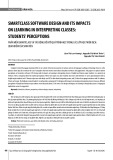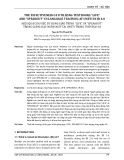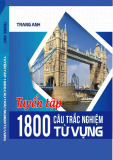
References 81
In fact, a biosensor is not just a simple association between a biocatalyst and the
transducer but a device which is affected by different interferences, requiring per-
haps thermostatic control, addition of nutritive solutions, adjustment of pH, salinity,
exposure to light and elimination of suspended solids. All these parameters need
to be carefully controlled in field applications (sometimes this is a difficult task) in
order to assure the quality of the data produced by these systems.
Another problem is related to the measurement systems (specially the optical in-
strumentation). In order to perform in-situ analysis it is advisable to design small
instruments to make them cheaper and more compact. Battery-operated instruments
based on solid-state technology (e.g. excitation with LED or laser diodes, silicon
photodiode detection, etc.) would be a potential solution for obtaining portable in-
struments.
Therefore validation of such devices in field conditions and development of a ro-
bust and portable instrumentation is a priority to include biosensors and other contin-
uous analytical systems in biomonitoring of water and to help to improve protection
of the aquatic environment. Otherwise these systems will remain mostly within the
academic and research frame. Only the systems which are fast, simple, cheap and
validated will have commercial success. This aim obviously cannot be achieved with-
out the cooperation of the biologists, engineers, statisticians and electrical engineers.
This interdisicplinary cooperation is absolutely necessary to ensure success.
REFERENCES
Allan, I., Vrana, B., Greenwood, R., Mills, G., Roig, B. and Gonzalez, C. (2006) Talanta,69(2),
302–322.
Araujo, C.V., Nascimiento, R.B., Oliveira, C.A., Strotmann, U.J. and da Silva, E.M. (2005) Chemo-
sphere,28, 1277–1281.
Cheng, J., Sheldon, E.L., Wu, L., Uribe, A., Gerrue, L.O., Carrino, J., Heller, M. and O’Conell,
J.P. (1998) Nature Biotechnol,16, 541–546.
Diez-Caballero, T. (2000) Ingen. Qu´ım.,6, 119–125.
Europto (1995) Air toxics and water monitoring. SPIE,2503.
Farr´e, M., Pasini, O., Alonso, M.C., Castillo M. and Barcel´o, D. (2001) Anal. Chim. Acta,426,
155–165.
Farr´e, M., Kloter, G., Petrovic, M., Alonso, M., Jose Lopez de Alda, M. and Barcel´o, D. (2002)
Anal. Chim. Acta,456, 19–30.
Freitas dos Santos, L., Defrenne, L. and Krebs-Brown, A. (2002) Anal. Chim. Acta,456, 41–54.
Holmes, D.S. (1994) Environ. Geochem. Health,16, 229–233.
ISCO (2004) Publicity data. STIP ISCO GmbH.
Marty, J.L., Garc´ıa, D. and Rouillon, R. (1995) Trends Anal Chem.,14, 329–333.
Nakanishi, K., Masao, A., Sako, Y., Ishida, Y., Muguruma, H. and Karube, I. (1996) Anal Lett., 9,
1247–1258.
Nistor, C., Rose, A., Farr´e, M., Stoica, L., Wollenberger, U., Ruzgas, T., Pfeiffer, D., Barcel´o, D.,
Gorton, L. and Emmneus, J. (2002) Anal. Chim. Acta,456, 3–17.
P´erez, F., Tryland, I., Mascini, M. and Fiksdal, L. (2001) Anal. Chim. Acta,427, 149.

82 Biosensors and Biological Monitoring for Assessing Water Quality
Philip, J., Balmand, S., Hajto, E. and Bailey, M.J. (2003) Anal. Chim. Acta,487, 61–74.
Pless, P., Futschik, K. and Schopf, E. (1996) J. Food Protect.,57(5), 369–376.
Rasgoti, S., Kumar, A., Mehra, N.K., Makhijani, S.D., Manoharan, A., Gangal, V. and Kumnar, R.
(2003) Biosensors Bioelectr.,18, 23–29.
Stanley, P.E., McCarthy, B.J. and Smither, R. (Eds) (1989) ATP-Luminiscence: Rapid Methods in
Microbiology. Blackwell, Oxford, vol. 26.
Tschemaleak, J., Proll, G. and Gauglitz, G. (2005) Talanta ,65, 313.
Wooley, A.T., Hadley, D., Landre, P., Demello, A.J., Mathies, R.A. and Noarthrup, M.A. (1996)
Anal Chem,68, 4081–4086.

1.6
Reference Materials
Philippe Quevauviller, Christian Dietz and Carmen C´amara
1.6.1 Introduction
1.6.2 Types of Reference Materials
1.6.3 Reference Material Requirements
1.6.4 Preparation
1.6.4.1 Collection
1.6.4.2 Sample Treatment
1.6.5 Storage and Transport
1.6.6 Homogeneity Control
1.6.7 Stability Control
1.6.8 Procedures to Obtain Certified/Reference Values
1.6.8.1 Certification of Reference Materials
1.6.8.2 Assigned Values
1.6.9 Traceability of Reference Materials
1.6.10 Evaluation of Analytical Results Using a Matrix Certified Reference Material
1.6.11 Reference Material Producers
References
1.6.1 INTRODUCTION
Pollutants continuously discharged into the environment within the borders of the
enlarged European Community present a significant risk to or via the aquatic envi-
ronment, including the risks of affecting waters used for the abstraction of drinking
Wastewater Quality Monitoring and Treatment Edited by P. Quevauviller, O. Thomas and A. van der Beken
C
2006 John Wiley & Sons, Ltd. ISBN: 0-471-49929-3

84 Reference Materials
water. The closing of water cycles is here an essential part of sustainable water
resource management, requiring protection of surface waters from especially prob-
lematic compounds, which are difficult to remove, toxic, endocrine disrupting or
affecting the organoleptic quality of the resulting drinking water. Impacts are both
direct and indirect, through degradation products, causing acute and/or chronic tox-
icity and/or long-term effects via bioaccumulation in aquatic food chains. The char-
acterization of the physico-chemical state of the aquatic environment should include
its dynamic aspects, the interrelation among the different environmental substrates
and the integration of the information concerning all these factors.
The current Water Framework Directive (WFD) is the major Community in-
strument for the control of point and diffuse discharges of dangerous substances.
Decision no. 2455/2001/EC of 20 November 2001, amending water policy directive
2000/60/EC, defines priority hazardous substances, subject to cessation of emissions,
discharges and losses into water. Their respective concentrations in the aquatic en-
vironment are aimed to be set back to values close to zero within a timeframe of not
more than 20 years.
Wastewater Treatment Plants play a key role in sustainable water resource man-
agement, requiring protection of surface waters from all compounds which are dif-
ficult to remove and/or toxic. Sound decisions on wastewater treatment procedures
should be based on accurate chemical measurements, which may be verified by
various means, e.g. proficiency testing (AOAC, 1992)or use of Certified Reference
Materials (Quevauviller and Maier, 1999; Stoeppler et al., 2001). Various Certified
Reference Materials (CRMs) are available for the quality assurance of water analy-
ses, as discussed in detail in a separate volume of the present Series (Quevauviller,
2002). However, discussions in the frame of a workshop dedicated to reference ma-
terials for water analysis have highlighted the lack of materials representative of
wastewater composition (Quevauviller, 1998). Indeed, the quality control of trace
element determinations in wastewater can hardly be fully demonstrated by the use
of CRMs of different water matrices. Recent developments made within a project
carried out through the Standards, Measurements and Testing Programme (follow-
up of the BCR Programme, European Commission) have allowed the verification of
the feasibility of preparation of real wastewater reference materials through an inter-
laboratory trial and to certify wastewater reference materials for their trace element
content. This chapter gives an overview on CRM requirements, with specific details
related to the wastewater CRM project.
1.6.2 TYPES OF REFERENCE MATERIALS
A Reference Material (RM) may be defined as a material or substance with one
or more property values that are sufficiently homogeneous and well established to
be used for calibration of an apparatus, assessment of a measurement method, or
assigning values to materials. A CRM is situated above those in the traceability
hierachy and are RMs accompanied by a certificate, with property values that are

Types of Reference Materials 85
certified by a procedure that establishes its traceability to an accurate realization of
the unit in which the property values are expressed, and for which each certified
value is accompanied by an uncertainty at a stated level of confidence (ISO, 1993).
CRMs are designed to verify and improve the quality of environmental chemical
analyses in various matrices; they are essential tools in the chain of traceability en-
suring comparable analytical data between laboratories, across borders, and through
time.
Various types of RMs are used in analytical chemistry for different objectives
(e.g. internal quality control, interlaboratory studies). RMs used for internal quality
control purposes are often referred to as Laboratory Reference Materials (LRMs) or
Quality Control Materials (QCMs). As described later, LRMs are used as a means
to compare results from one laboratory with another (in the frame of interlaboratory
studies) and/or monitor method reproducibility (through control charts), whereas
CRMs enable the results to be linked to those of known standards at the international
level, and to verify the accuracy of a method at any desired moment.
RMs can be:
rPure substances or solutions used for the calibration and/or the identification of
given parameters, or aimed at testing part or totality of an analytical procedure
(e.g. raw or purified extracts, spiked samples, etc.).
rMaterials with a known composition, aimed at the calibration of certain types of
measurement instruments. In the case of CRMs, calibrating solutions have to be
prepared gravimetrically by specialized laboratories.
rMatrix reference materials, representing as much as possible the matrix analysed by
the laboratory. In the case of LRMs, the materials may be prepared by the laboratory
for internal quality control purposes (e.g. establishment of control charts) or for
use in interlaboratory studies. CRMs are certified for specific parameters and are
reserved for the verification of a measurement procedure. The certification is based
on specific procedures that are described in the following sections.
rRMs that are operationally defined. The assigned or certified values are directly
linked to a specific method, following a strict analytical protocol.
CRMs are expensive items. Their production and certification are very costly (typi-
cally several hundred thousands euros). Hence, they should in principle be reserved
for the verification of the accuracy of analytical procedures and not for daily use
(e.g. routine internal control of a laboratory). Two further disadvantages of using
CRMs for certain purposes result from the compromises that have to be accepted by
the end user. One is the additional material manipulation to achieve the necessary
homogeneity and stability for a CRM. The other is the fact that the matrix of any
CRM never matches that of real samples to be analysed 100 %. The user must de-
cide whether the resulting deviation can be accepted within the Quality Assurance
process.


![Đề cương học phần Ứng dụng công nghệ thông tin trong giảng dạy ngoại ngữ (Application of Information Technology in Language Teaching) [Mới nhất]](https://cdn.tailieu.vn/images/document/thumbnail/2025/20250212/tuetuebinhan666/135x160/881739332468.jpg)









![Tài liệu Từ vựng tiếng Anh Trung cấp [mới nhất]](https://cdn.tailieu.vn/images/document/thumbnail/2025/20250913/nguyentuan250421@gmail.com/135x160/99491757910839.jpg)
![Tài liệu Từ vựng Tiếng Anh theo chủ đề [mới nhất]](https://cdn.tailieu.vn/images/document/thumbnail/2025/20250913/namdhuet@gmail.com/135x160/83251757753810.jpg)



![Tài liệu Từ vựng tiếng Anh cho bé [chuẩn nhất/mới nhất]](https://cdn.tailieu.vn/images/document/thumbnail/2025/20250731/huadaithesang2509@gmail.com/135x160/18631754013896.jpg)








